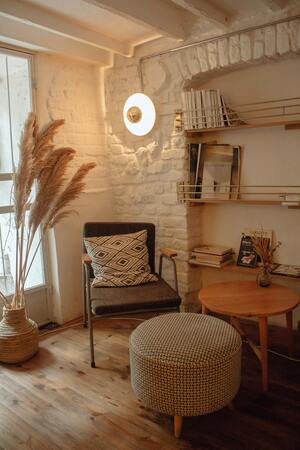More from Bella Virtual Staging USA
More in Politics
Related Blogs
أرشيف
حصة الاجتماعي
How Interior 3D Rendering Improves Client Communication
الجسم
In the dynamic world of interior design, effective communication between designers and clients is paramount. Misunderstandings and miscommunications can lead to unsatisfactory results, wasted time, and strained relationships. This is where interior 3D rendering comes into play. By providing a visual representation of design concepts, interior 3D rendering significantly enhances client communication, ensuring that everyone involved is on the same page from the outset.
Visualizing Design Concepts
One of the most significant challenges in interior design is helping clients visualize abstract ideas. While sketches and mood boards provide a basic understanding, they often leave too much to the imagination. Interior 3D rendering eliminates this issue by offering a detailed, realistic visualization of the proposed design.
- Clarity: Clients can see exactly how the space will look, including colors, textures, and lighting.
- Accuracy: The 3D render accurately represents the dimensions and proportions of the space, helping clients understand the scale of the design elements.
- Engagement: Clients are more likely to engage with the design process when they can see a lifelike representation of the final result.
Bridging the Gap Between Ideas and Reality
Clients often have a vision for their space but may struggle to articulate it. This can lead to misunderstandings between what the client wants and what the designer creates. Interior 3D rendering bridges this gap by translating abstract ideas into concrete visuals.
- Idea Translation: Designers can take a client’s verbal descriptions and preferences and turn them into a visual concept that accurately reflects their vision.
- Feedback Loop: Clients can provide more precise feedback when they see a 3D render, as they can point out specific elements they like or dislike.
- Iterative Process: Designers can easily make adjustments to the 3D render based on client feedback, ensuring the final design aligns with the client’s expectations.
Enhancing Decision-Making
Making decisions about interior design can be overwhelming for clients, especially when they can’t fully grasp how different elements will come together. Interior 3D rendering simplifies the decision-making process by allowing clients to see the impact of their choices in real time.
- Comparison: Clients can compare different design options side by side, such as various color schemes, furniture arrangements, or lighting setups.
- Informed Choices: By visualizing the design, clients can make informed decisions about materials, finishes, and layouts, reducing the likelihood of regret later on.
- Confidence: Seeing the design in 3D gives clients the confidence to make decisions, knowing they have a clear understanding of the outcome.
Facilitating Collaboration
Interior 3D rendering not only improves communication between designers and clients but also enhances collaboration among all parties involved in the project. This includes contractors, architects, and other stakeholders.
- Unified Vision: A 3D render serves as a visual reference that everyone can agree on, ensuring a unified vision for the project.
- Problem-Solving: Potential issues can be identified and addressed early in the design process, thanks to the detailed nature of interior 3D rendering.
- Streamlined Workflow: With a clear visual plan, the execution phase becomes more efficient, reducing the risk of errors and delays.
Reducing Miscommunication and Revisions
Miscommunication can lead to costly revisions and delays, frustrating both clients and designers. Interior 3D rendering minimizes these risks by providing a clear, detailed, and accurate representation of the design.
- Clear Expectations: Clients know exactly what to expect, reducing the likelihood of surprises or disappointments.
- Fewer Revisions: With a 3D render to guide the process, there’s less need for revisions, saving time and money.
- Improved Satisfaction: Clients are more likely to be satisfied with the final result when they’ve had a clear understanding of the design from the beginning.
Conclusion
Interior 3D rendering is a game-changer in the field of interior design, particularly when it comes to client communication. By providing clear, accurate, and engaging visualizations, interior 3D rendering bridges the gap between ideas and reality, enhances decision-making, facilitates collaboration, and reduces the risk of miscommunication. For designers looking to improve their client interactions and deliver exceptional results, interior 3D rendering is an indispensable tool.













تعليقات